

The Wonders of Museums I is an eight episodes series profiling museums in seven international cities: Taipei, Taichung, Singapore, Okinawa, Kyoto, Berlin, and Belfast. Audiences both young and old will enjoy an unforgettable journey through these family friendly exhibits.
Season One includes: The Berlin Museum of Natural History, The Titanic Museum in Northern Ireland, The Kyoto Railway Museum, The Churaumi Aquarium in Okinawa, The Gardens by the Bay in Singapore, The Singapore Zoo, The National Taiwan Museum, and The National Museum of Natural Science in Taichung.
While The Wonders of Museums features world-class destinations, each travel documentary is also infused with the educational merits of each institution. These include painstaking efforts to uncover human history and to document the course of human evolution (Natural History Museums); the human ingenuity that utilized the railway, a marvel of the Industrial Revolution, to expand our perceptions and experiences (Railway Museum); a reminder that technological advancement will never overcome the interventions of Mother Nature (Titanic Museum); an exploration of how renewable energy inspired the construction of a virtual garden and a cityscape more beautiful than even nature intended (Gardens at the Bay); and how humans can truly live in harmony with the natural world (Singapore Zoo and Churaumi Aquarium).
Why choose these eight locations from the many museums worldwide?
What is it about these collections and their behind the scenes construction that mystifies visitors?
What is the secret behind their innovative approach to harness the joy of learning?
Would you believe that these museums are also important hubs for researchers?
Do you know how to distinguish true dinosaur fossils from a replica?
Why does a natural history museum need taxidermy?
Why is the Titanic such a memorable disaster?
What is the imaginative design behind an open concept zoo?
How do you display flourishing Japanese railway culture in a museum?
How does a man-made garden harness renewable energy to become more environmentally friendly?
What’s the use of a pollen sample database?
What does the appearance of both the many visible and invisible insects living in our homes mean for us?
The Wonders of Museums will reintroduce audiences to museums on a journey through the mystifying splendor of the unknown. This program is sure to provide a fresh perspective as we explore a familiar institution through new vantage points.
England, France, and Germany are all former colonial powers. Today, each nation is home to a natural history museum with a world-class collection. Specimens from over 100 years of biological study are on display at one of Germany's largest natural history museums– the Berlin Museum of Natural History. The exhibit includes hundreds of fossils uncovered on Tendaguru Hill in modern Tanzania; a fossil of Brachiosaurus brancai, now called Giraffatitan brancai; and a sample specimen of Archaeopteryx, known as "the Mona Lisa of natural history." Archaeopteryx has a beak like a bird, but also has teeth like a reptile. The specimen exhibits traits of an animal between birds and reptiles, serving as the "missing link" to prove Charles Darwin's theory of human evolution. The museum is also home to Tristan the T-Rex from Canada. 90% of the world's dinosaurs are missing their heads, but Tristan's is still very much in tact. He's become the superstar of the museum's exhibition.
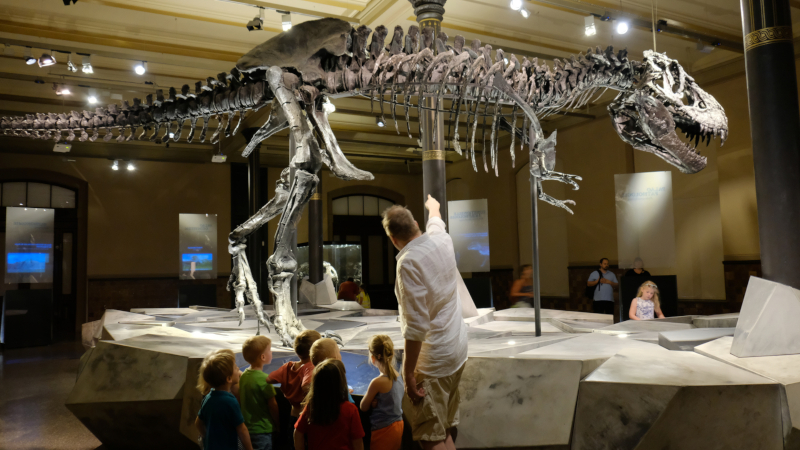
How do biologists know if a dinosaur was an herbivore or a carnivore?
What is a sample specimen?
Why does a natural history museum make and display animal specimens?
What sorts of techniques help a taxidermist to produce a lifelike specimen?
The Berlin Museum displays more than 90% of the world's bird species, even some extinct species. Why did these species go extinct?
This episode will provide audiences with the answers to protecting the biodiversity of the earth.
Titanic Belfast in Northern Ireland was opened in 2012 to commemorate the centenary of Titanic's maiden voyage. In just six short years, the museum has become extremely popular with tourists. As of May 2018, Titanic Belfast has welcomed more than four million visitors. Most notable is that visitors from Asia account for nearly 30% of that total. What makes this monument to maritime heritage such a worthwhile destination?
When Titanic departed the British port of Southampton on April 10, 1912, she was the world's largest luxury ocean liner. When exactly was April 10, 1912? That's just six months after Sun Yat-sen overthrew the Qing Dynasty.
Back then, the passenger jet hadn't yet been invented. The ocean liner was the only avenue for intercontinental travel and immigration. Belfast emerged as the world's largest ship building city and employed more than 5000 workers. Titanic became known as "the unsinkable ship." She was a source of local pride and soon earned the adoration of crowds around the world.
Nobody imagined that the Titanic would strike an iceberg during her maiden voyage to New York. Titanic sank within 2 hours and 47 minutes, taking more than 1500 souls with her. Thankfully, there are more than 700 survivors who shared their triumphs and their sorrows. These stories have been commemorated in numerous literary volumes and films over the last hundred years. The stories of both passengers and crew ensure that the memory of Titanic will endure.
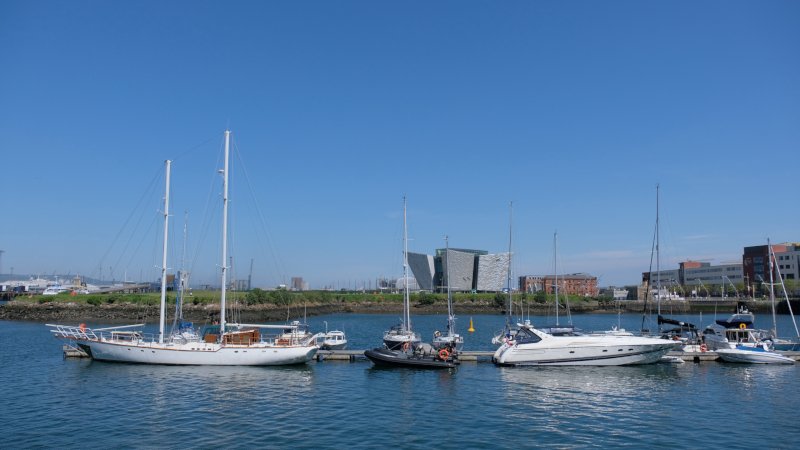
Is Belfast home to any other architecture or cultural relics associated with Titanic besides the Titanic Museum?
What do you think of when you look at Titanic Belfast's unique architectural structure?
How well were workers compensated for their work? How much was a day's wage?
Just how massive was the Titanic? How do we know?
How many rivets were used to build the Titanic?
What was it like onboard the world’s largest luxury ocean liner and how much was a ticket?
This episode will help audiences better understand the legend behind the Titanic.
Japan can be considered the railway capital of the world; both in terms of the unparalleled expanse of its railway network and the ingenious design behind the world-class Kyoto Railway Museum. This episode of The Wonders of Museums takes audiences on a trip to Kyoto to visit Japan's largest railway museum.
Highlights of the museum include the first ever 0 series Shinkansen, antique steam engines, bullet trains, and other historic locomotives that demonstrate the development of the Japanese railway. The Kyoto Railway Museum moves beyond an aesthetic appreciation for trains, and instead seeks to provide visitors with a first hand experience about the ingenuity of the railway. The museum features an authentic driving simulator to give visitors a sense of how it feels to drive several types of trains.
The steam locomotive restoration garage and antique roundhouse sheds take visitors back in time to explore the rustic, yet classical age of steam locomotives. What's more, children will love a closer look at the world's largest model train set. This attraction combines intricate train models with the majestic scenery of Western Japan to provide a realistic glimpse into the inner workings of the Japanese railway. A behind the scenes tour also sheds light on the secrets behind the exhibit.
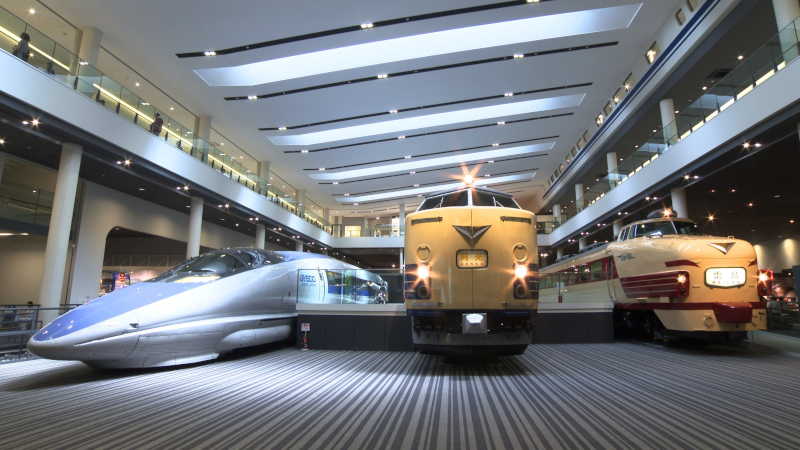
How are these massive and stationary trains fit so neatly in the museum?
Which technique did the museum's architects use to ensure visitors could enjoy the exhibits while also observing real trains in action?
How does the staff operate the model trains? What do they look like up close?
Why is the Kyoto Railway Museum responsible for repairing steam trains?
What professional qualifications are required to become a Shinkansen driver? What scares a Shinkansen driver most–a snowstorm, an earthquake, or a stomach ache?
This episode will provide audiences with an all-new perspective on the operation of the railway.
The Churaumi Aquarium in Okinawa is one of the world's three largest aquariums. The aquarium is the best place to learn about marine life, and features 77 aquatic tanks displaying more than 21,000 sea creatures from over 740 different species. The Kuroshio Sea is the second largest aquatic tank in the world, and houses two specimens from the world's largest fish species– the whale shark. Feeding a whale shark is much more complicated than simply sprinkling them with food. Researchers were required to build an incredibly sturdy tank. The whale sharks are also subjected to regular blood tests in order to monitor their health.
Sudden pressure changes can prove deadly to deep-sea creatures. How did the aquarium reconstruct a deep-sea environment on land to display these creatures? Turns out, researchers relied on an unmanned underwater vehicle, called an ROV, and other high-tech pressure reduction equipment to help these deep sea creatures experience their first moments in the sun!
Modern aquariums share one other important mission. These institutions work to protect against an impending crisis that threatens marine life. The Churaumi Aquarium is dedicated to the rehabilitation of sea turtles, and undertakes numerous recording efforts at regular intervals. This ensures we can all track the progress of this rather challenging endeavor.
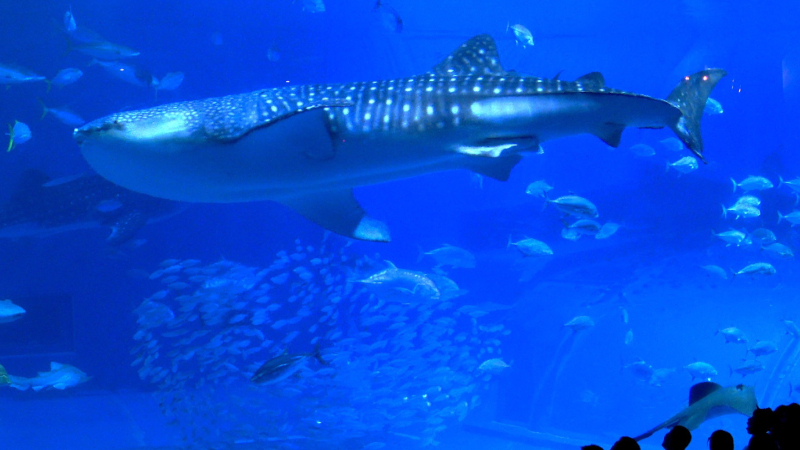
How are these massive aquatic tanks made? Where does all the water come from? How do these tanks withstand such intense water pressure?
How do researchers give a whale shark a blood test? Why do these sharks need a blood test?
What do whale sharks and manta rays eat? What's the secret behind their unique eating habits?
How does an ROV capture deep-sea creatures? What challenges do researchers face from capture to exhibition?
Did humans cause the sea turtle to become endangered? Why are these turtles endangered? How are researchers working to restore the population?
This episode features first hand interviews and valuable recordings from the museum collection to provide audiences with a glimpse into life under the sea!
Singapore is the world's most successful example of green technology. Known as the Garden City, Singapore unveiled another source of national pride in 2012 following the grand opening of the Gardens by the Bay. The island nation was once again propelled onto the global stage after the Gardens were named one of the Top 10 Best Indoor Gardens. The Gardens at the heart of Marina Bay have transformed the Garden City into a veritable City in a Garden!
Despite a lack of natural resources, Singapore has created an ethereal indoor garden on a magnificent scale. This reflects their dedication to a sustainable development blueprint and the research and development of green energy. The Gardens actually represent a complete green energy system.
There are 18 Supertrees in the center of the Gardens. These structures stand nearly 25-50 meters tall and are a true technological advancement. A visit to the Gardens is almost like stepping into the magical world of Pandora from James Cameron's Avatar. The Supertrees are themselves a type of vertical garden. The treetops are covered in tropical plants, epiphytes, and ferns. The Supertrees provide shade, control ambient temperatures, and conserve energy during the day, while providing plenty of illumination at night. The Supertrees also help to power two air-conditioned conservatories, and to conserve water in a beautiful yet effective green energy ecosystem.
The Gardens are home to two air-conditioned conservatories: the Flower Dome (temperate climate) and the Cloud Forest (cool moist climate), as well as several themed and heritage gardens. These exhibits display nearly a million different plants from all over the world. These massive and temperate greenhouses are powered by biomass and solar energy. The Flower Dome and the Cloud Forest are a marvel modern engineering; especially in a tropical island nation like Singapore.
Dragonfly and Kingfisher Lakes are important freshwater reservoirs that supply water for the Gardens. The lakes also form a circular ecological zone that leverages the tenacity of Mother Nature and the limitless potential of science and technology. Marina Bay provides a front row seat to witness the power of green technology and sustainability.
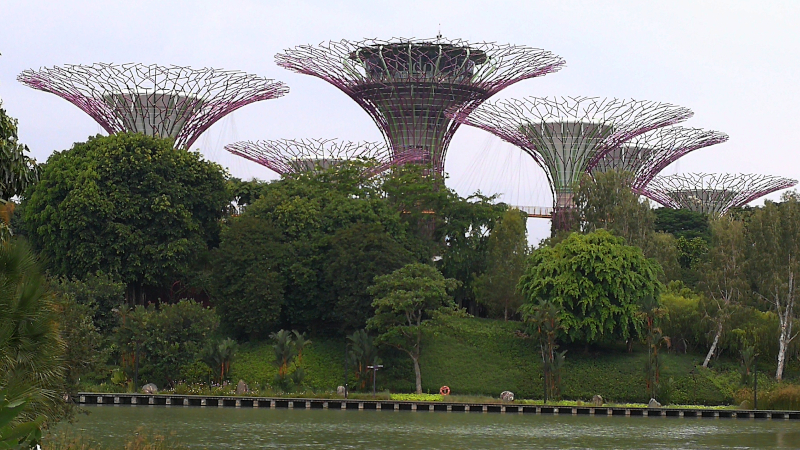
How did a completely interconnected green energy system inspire the design of the Gardens by the Bay?
Why do the Supertrees generate electricity? What is the secret behind their beauty?
Most greenhouses are hothouses with a similar structure designed to spur plant growth, but the Gardens are the largest air-conditioned conservatories without columns in the world. How were they built?
While Cloud Forests account for only 2% of all forests on earth, they are home to some extremely rare plant species. Why do these unique ecological habitats continue to face destruction?
This episode will delight audiences with the majesty of Singapore's green miracle!
The Singapore Zoo is located in the heart of a tropical rainforest and is well known for an open concept layout divided into several ecological zones. In fact, there are no additional barriers like metal railings or glass windows to separate guests from the animals. A tour of the Singapore Zoo is almost taking a walk through a remote forest. Squirrels and Orangutans scurry about on the canopy, while peacocks and monkeys roam around below. This provides visitors with a unique chance to experience the wonders of nature.
Singapore Zoo is a member of the Singapore Wildlife Conservation Corps. The exhibits are divided into four main zones according to the unique characteristics of each animal. This is no small feat for a small country like Singapore!
The Singapore Zoo is home to over 300 animals with habitats for more than 2,800 animals, 26% of which are endangered species. Singapore Zoo regularly participates in conservation efforts and breeding projects. Their efforts have been well received by the international community.
Singapore Zoo boasts a leading veterinary team and global research center to provide better care for wild animals. The Singaporean government has also designated the zoo as a local wildlife rehabilitation center. Singapore Zoo welcomes more than two million visitors annually and is consistently ranked as one of the top three zoos in the world. The exhibit provides visitors with an up-close and immersive learning environment.
The River Safari that opened last year is inspired by eight of the world's most iconic rivers in hopes to remind visitors to help river conservation.
The River Safari features the world's largest freshwater aquarium–the Amazon Flooded Forest. This adventure on the Amazon River provides an opportunity to visit with the aquarium's famous manatees or to feed an electric eel. Along the way, visitors are also challenged to confront common misconceptions about these animals.
The Singapore Zoo combines an open concept layout with conservation efforts, including educational programs, breeding of endangered species, rehabilitation of wild animals and international advocacy. The Singapore Zoo does more than simply entertain guests. The institution also serves as an example to us all of how to treat wild animals.
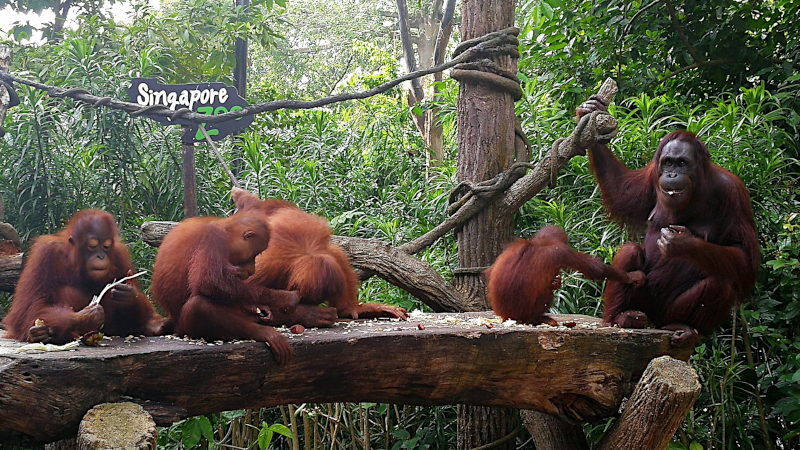
What is the objective behind an open concept layout with no cages or fences at Singapore Zoo?
Isn’t the staff worried these animals will escape? Why does the Zoo encourage guests to feed the animals? What is the purpose of these activities?
Why is it necessary to exchange animals between zoos?
Some people oppose raising animals in captivity, while others feel some animals are better suited for that kind of environment. Why?
This episode will help audiences to discover if combining an open concept zoo and conservation efforts has changed the way we treat animals.
Scientists are credited for the discovery of most items in a museum collection. These individuals travel on overseas exhibitions or scale the highest peaks to uncover our natural history. Scientists use their acute observation skills to discover new plant species, prepare a sample, and publish their findings before bringing these plants back to the museum collection.
The National Taiwan Museum, established in 1908 under Japanese colonial rule, is the oldest museum in Taiwan. The mysteries of colonial Taiwan attracted many ambitious Japanese researchers by sparking their lifelong passion for discovering and collecting new species. These researchers gradually provided a foundational database for natural science research in Taiwan.
Colonialism reached its peak in 19th century Europe and overseas expeditions became quite common. The later publication of On the Origin of Species by Charles Darwin inspired several scientists to catalogue the natural world. The Japanese colony of Taiwan represented a new world for Japanese naturalists to explore. The museum’s first director, Takiya Kawakami, began a large-scale survey of plants in Taiwan. His team of Japanese researchers later created the blueprint for the study of Taiwanese botany!
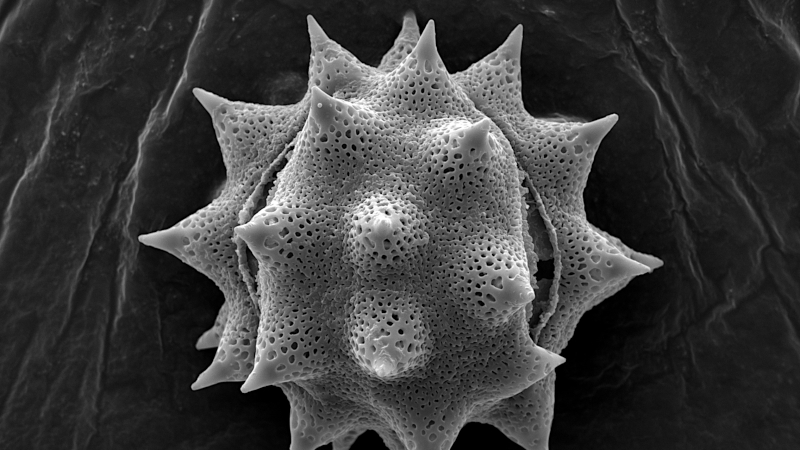
Why do botanists continuously collect and preserve samples?
How many plant species have been discovered on Taiwan?
Which botanical discovery helped bring the name Taiwan onto the global stage?
How does becoming a citizen scientist help the planet?
What can a pollen sample tell us about the climate 20,000 years ago?
This episode takes audiences back one hundred years to explore how Taiwan was discovered by contemporary natural science.
Have you ever seen a bookworm? If you haven’t opened your favorite book in awhile, you may find that insects have eaten it, and that the intricate tunnels traversing its pages are actually quite beautiful. I’m sure you’ve seen lots of insects in your kitchen, bedroom, or other places around the house. What draws these little critters into our homes?
As humans continue to develop their environment many insects have moved into our homes. The insects are attracted to our humble abodes because they see a suitable environment that’s full of food!
The earliest human homes were caves shared with burrowing creatures. Today, we live in concrete high rises, but no matter how much we separate or isolate our homes from the outside world, we are still a part of nature. Our homes are home for insects too!
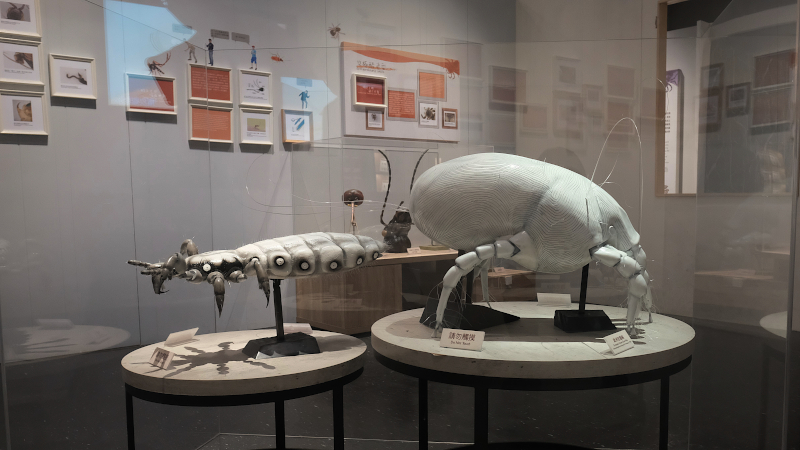
Did you know the microscopic world of insects is almost as wide as the cosmos?
Did you know a mosquito is as beautiful as a work of art?
How did a cockroach inspire search and rescue robots for disaster zones?
How do you dissect an insect smaller than 0.1 centimeters?
If an insect is unwilling to enter your home, is it truly a healthy environment?
This episode of The Wonders of Museums will challenge your misconceptions about household pests as you rediscover the world of insects!